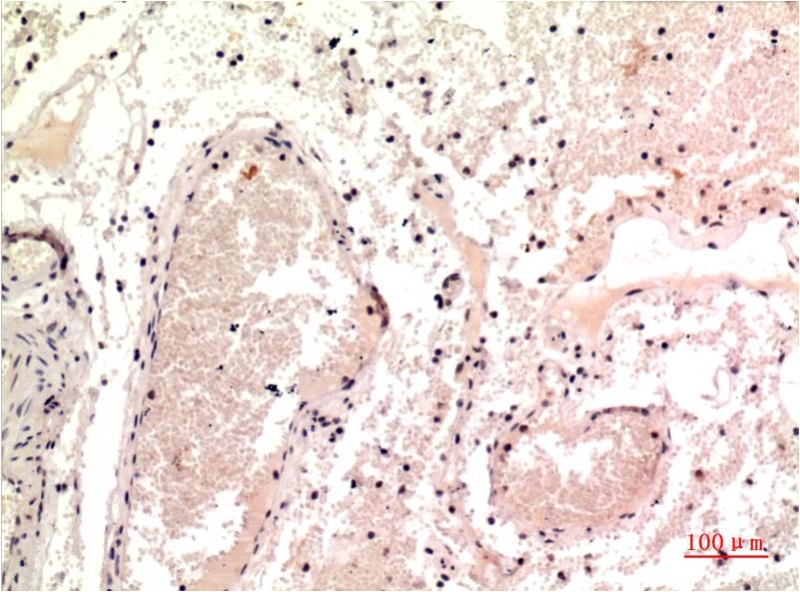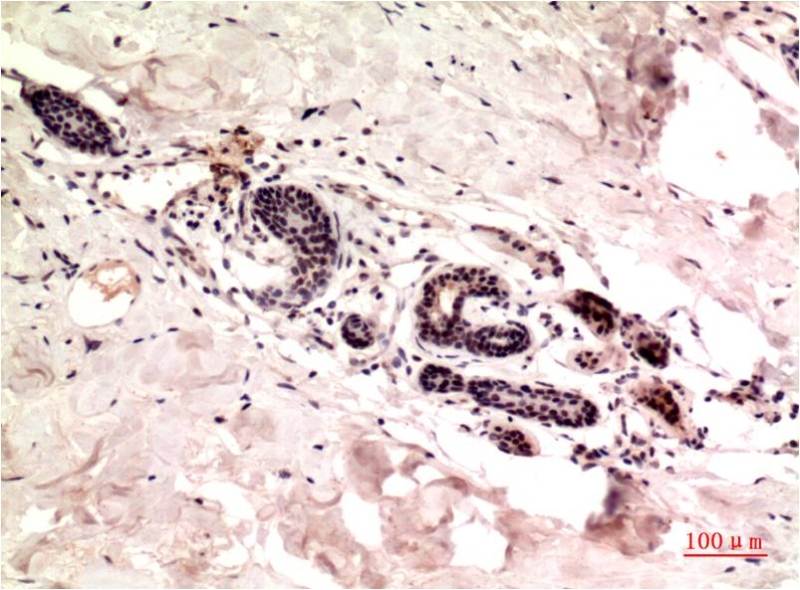

| WB | 咨询技术 | Human,Mouse,Rat |
| IF | 咨询技术 | Human,Mouse,Rat |
| IHC | 1/50-1/100 | Human,Mouse,Rat |
| ICC | 技术咨询 | Human,Mouse,Rat |
| FCM | 咨询技术 | Human,Mouse,Rat |
| Elisa | 1/10000 | Human,Mouse,Rat |
| Aliases | TUBG1; TUBG; Tubulin gamma-1 chain; Gamma-1-tubulin; Gamma-tubulin complex component 1; GCP-1 |
| Entrez GeneID | 7283 |
| clone | 2A5 |
| Host/Isotype | Mouse IgG1 |
| Antibody Type | Primary antibody |
| Storage | Store at 4°C short term. Aliquot and store at -20°C long term. Avoid freeze/thaw cycles. |
| Species Reactivity | Human |
| Immunogen | Synthetic peptide conjugated to KLH. |
| Formulation | Purified antibody in PBS with 0.05% sodium azide,0.5%BSA and 50% glycerol. |
+ +
以下是关于OX40L抗体的模拟参考文献示例(仅供格式参考,非真实文献):
1. **文献名称**:*Targeting OX40L in Atopic Dermatitis: Preclinical Efficacy of a Monoclonal Antibody in Reducing Skin Inflammation*
**作者**:Chen L, et al.
**摘要**:研究显示,抗OX40L单克隆抗体通过抑制Th2细胞活化和角质形成细胞炎症因子释放,显著减轻小鼠特应性皮炎模型的皮肤病变。
2. **文献名称**:*OX40L Blockade Enhances Antitumor Immunity in Combination with PD-1 Inhibitors in Solid Tumors*
**作者**:Johnson R, et al.
**摘要**:临床前研究表明,抗OX40L抗体联合PD-1抑制剂可协同激活肿瘤微环境中CD8+ T细胞,抑制黑色素瘤和结肠癌模型中的肿瘤生长。
3. **文献名称**:*Therapeutic Potential of Anti-OX40L Antibody in Systemic Lupus Erythematosus: Suppression of Autoantibody Production*
**作者**:Wang Y, et al.
**摘要**:在系统性红斑狼疮(SLE)小鼠模型中,抗OX40L抗体通过干扰T-B细胞相互作用,显著降低自身抗体水平并改善肾脏病理损伤。
4. **文献名称**:*Phase I Trial of an OX40L-Neutralizing Antibody in Asthma: Safety and Immunomodulatory Effects*
**作者**:Martinez G, et al.
**摘要**:I期临床试验证实,抗OX40L抗体在哮喘患者中安全性良好,可降低气道嗜酸性粒细胞浸润和Th2相关细胞因子表达。
**建议**:实际文献可通过PubMed或Google Scholar检索关键词“OX40L antibody”、“anti-OX40L therapy”或“OX40/OX40L pathway”获取。
OX40 ligand (OX40L), also known as TNFSF4. is a cell-surface protein belonging to the tumor necrosis factor (TNF) superfamily. It interacts with its receptor OX40 (CD134), primarily expressed on activated T cells, to co-stimulate immune responses. OX40L is expressed on antigen-presenting cells (e.g., dendritic cells, B cells) and endothelial cells, playing a critical role in T cell activation, survival, and differentiation. This pathway is pivotal in enhancing effector T cell responses while suppressing regulatory T cell (Treg) functions, making it a therapeutic target in immune-related diseases.
OX40L-blocking antibodies are designed to disrupt OX40/OX40L interactions, thereby modulating excessive immune activation. They have shown potential in treating autoimmune diseases (e.g., atopic dermatitis, rheumatoid arthritis) and allergic conditions by reducing inflammatory cytokine production and T cell hyperactivity. Conversely, agonist antibodies targeting OX40 aim to boost anti-tumor immunity by enhancing T cell proliferation and memory responses in cancer immunotherapy.
Several OX40L-targeting antibodies, such as KY1005 and KHK4083. are in clinical trials. Early-phase studies demonstrate improved disease activity in eczema and asthma, though challenges remain, including balancing efficacy with immune-related adverse events. Research also explores combination therapies with checkpoint inhibitors (e.g., anti-PD-1) to amplify therapeutic effects. However, the dual role of OX40L in both pro-inflammatory and immune-regulatory pathways necessitates precise targeting strategies to avoid paradoxical outcomes. Ongoing studies aim to refine dosing and identify biomarkers for patient stratification.
×